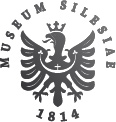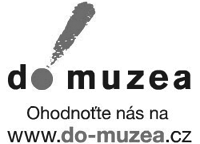Slezský sborník
rok 2011
ročník 109
číslo 3–4
Obsah / Contents
Studie / Articles (s. 165–273)
Jakub MAMULA: Obrana zemského míru ve Slezsku v období interregna. Příspěvek k poznání problematiky obranných mechanismů v zemích Koruny české
s. 165–186
The defence of provincial peace in Silesia in the period of interregnum. A contribution to the topic of defensive mechanisms in the Lands of the Bohemian Crown
The study deals with analysis of power relations in the area of Silesian principalities in the period of late Middle Ages (1439–1452) with focus on defensive mechanisms against all forms of disruption of provincial peace with the target of renewing and securing perpetual order in the country.
Key Words: Silesian principalities, interregnum, 15th century, provincial peace, general good, aristocratic footpadding, country society, landfrýd (from German, provincial piece)
Jan AL SAHEB: Protihabsburské stavovské povstání Imricha Tökölyho v Uhrách a obrana moravsko-slezsko-uherské hranice
s. 187–205
The Imrich Tököly’s anti-Habsburg estates’ rebellion in Hungary and securing the Moravian-Silesian-Hungarian border
Estates’ rebellions in Hungary during the 16th–18th centuries meant a real threat to the neighbouring regions of Moravia and Silesia. Organisation of defence of this area showed partial disproportions not only between both regions, but also in the scope of themselves. Regarding command authorities, estates’ and provincial bodies, the bishop of Olomouc and the monarch participated in the defence, which complicated the operation and cooperation of individual parts of defence. The costly organisation of defence mechanisms of both regions at the same time caused delays in their prompt initiation, which enabled the Hungarian rebels to attack repeatedly the imperfectly guarded cross-border areas on the Moravian-Silesian-Hungarian border.
Key Words: estates’ rebellion, Hungary, Imrich Tököly, Moravia, Silesia, border defence, warfare, provincial congress
Petr KADLEC: Střední školství a formování české inteligence na severní Moravě a ve Slezsku ve druhé polovině 19. a na počátku 20. století
s. 207–234
Secondary schools and forming Czech intelligentsia in Northern Moravia and Silesia in the second half of 19th and at the beginning of 20th century
This study deals with place of secondary schools in the process of forming Czech intelligentsia in the territory of the Northern Moravia and Silesia in the second half of 19th and at the beginning of 20th century. The starting point of the author is a premise that secondary schools (grammar schools, Realschulen and their combinations) of this period are able to be considered as real producers of this social group. In the study there is an outline of essential aspects and trends of the evolution of secondary schools in Moravia and Silesia area. The main point of this comparative article is focused on structures of students who started to study on five selected secondary school institutions with Czech teaching language in Opava, Moravská Ostrava, Přerov and Olomouc in the monitored period. There is introduced the transformation of a structure of students in term of their territorial origin and socio-cultural attributes. The ambition is to find out from what kind of background the Czech secondary school students came from and what kind of background formed the representatives of Czech intelligentsia in the second half of 19th and at the beginning of 20th century.
Key Words: education, secondary schools, intelligentsia, Moravia, Silesia, 1850–1914, students
Oľga ŠRAJEROVÁ: Národná identita ako hodnota
s. 235–250
The National Identity as the Value
The study observes the position of national identity in the value system of the Czech, the Slovak and the Polish people. It’s a result of historical and sociological researches of the Silesian Institute of Silesian Museum in Opava. These researches have taken place since the sixties to the present day. After theoretical introduction, the study brings on results of sociological researches concentrated on national identity as a value. Following information are based on these researches: the place of ethnicity within value system of Czech majority, Polish and Slovak national minorities. Researches also describe the importance of national affiliation in the value system, degree of ethnical identification with oneself’s group, relation between civil and national principle, relation between a man’s character and national affiliation. It also observes a question of the national change which was a result of political changes after the separation of Czechoslovakia. It pays attention to the role of national identity in value system of young people as well.
Key Words: national identity, value system, national minority, the Czechs, the Slovaks, the Polish, sociolo-gical researches, axiology
MATERIÁLY / MATERIALS (s. 251–273)
Pavel KLADIWA – Andrea POKLUDOVÁ: Pozůstalosti Hanse Kudlicha
s. 251–273
Hans Kudlich’s inheritance
The study concerns Hans Kudlich’s inheritance deposited in Niederösterreichisches Landesarchiv in St. Pölten and in International Institute of Social History in Amsterdam. After general contents characteristics of the inheritance it focuses in detail on some sections of Kudlich’s correspondence: a) correspondence concerning the family, b) letters from exile 1849-1853, c) some interesting points in other letters addressed to H.K., d) salutes of thanks and letters sent to Kudlich on the occasions of various anniversaries. In the last part of the study we can find a treatise on two interesting handwritten publications by Hans Kudlich, namely Festschrift zur silbernen Hochzeit der Maerzrevolution von 1848. Historisch-politische Bemerkungen von Dr. Hans Kudlich and Kudlich´s Erinnerungen an Rieger.
Key Words: Hans Kudlich, the Habsburg monarchy, German liberalism, nationalism, Czech-German relations
Recenze / Reviews (s. 274–290)
Zprávy o literatuře / Brief Notices (s. 291–311)
Kronika / Chronicle (s. 312–317)
Bibliografická příloha / Bibliography (s. 318–319)
Poslední aktualizace článku: 06.10.2015
Vytisknout celý článek







